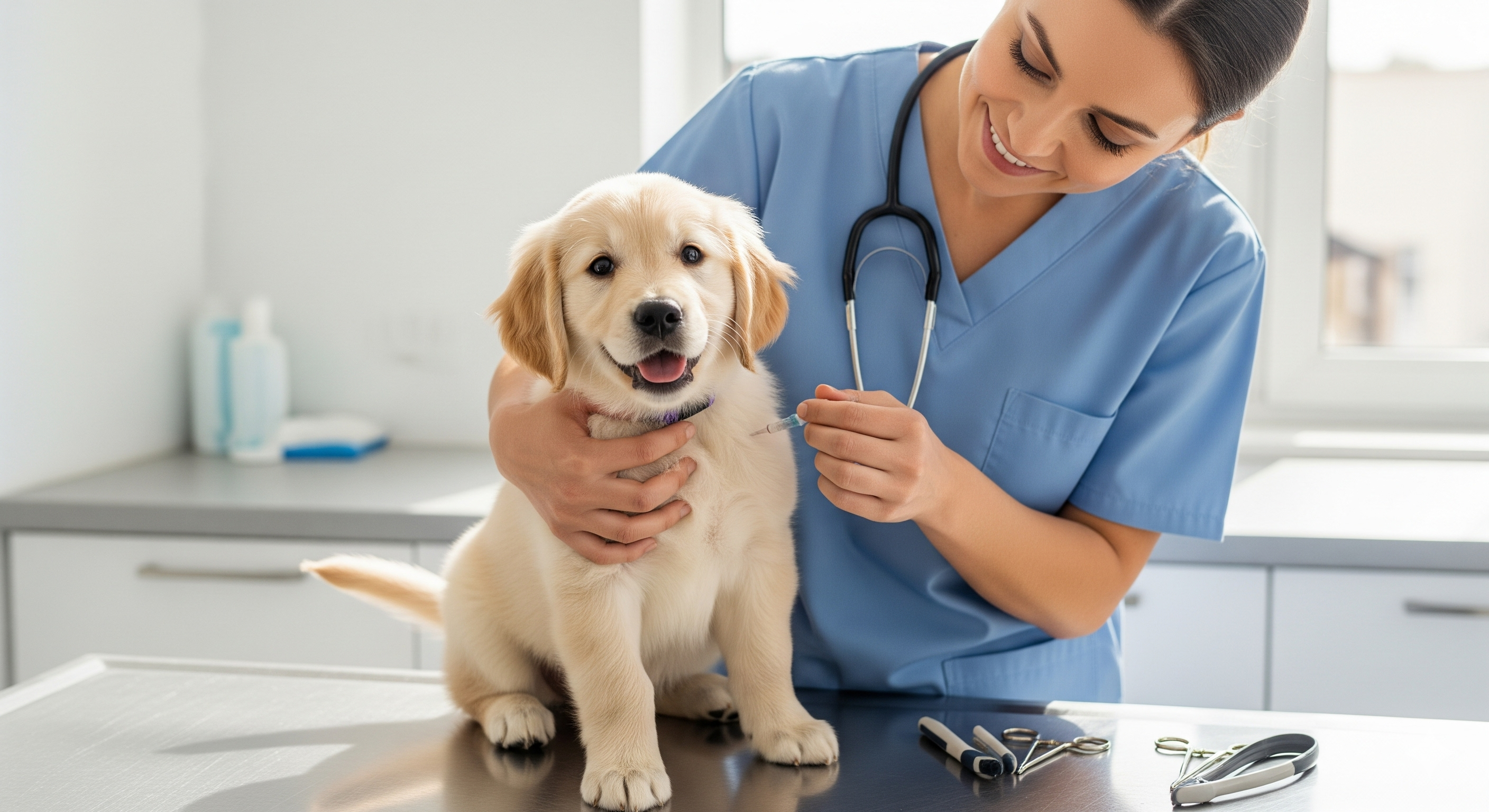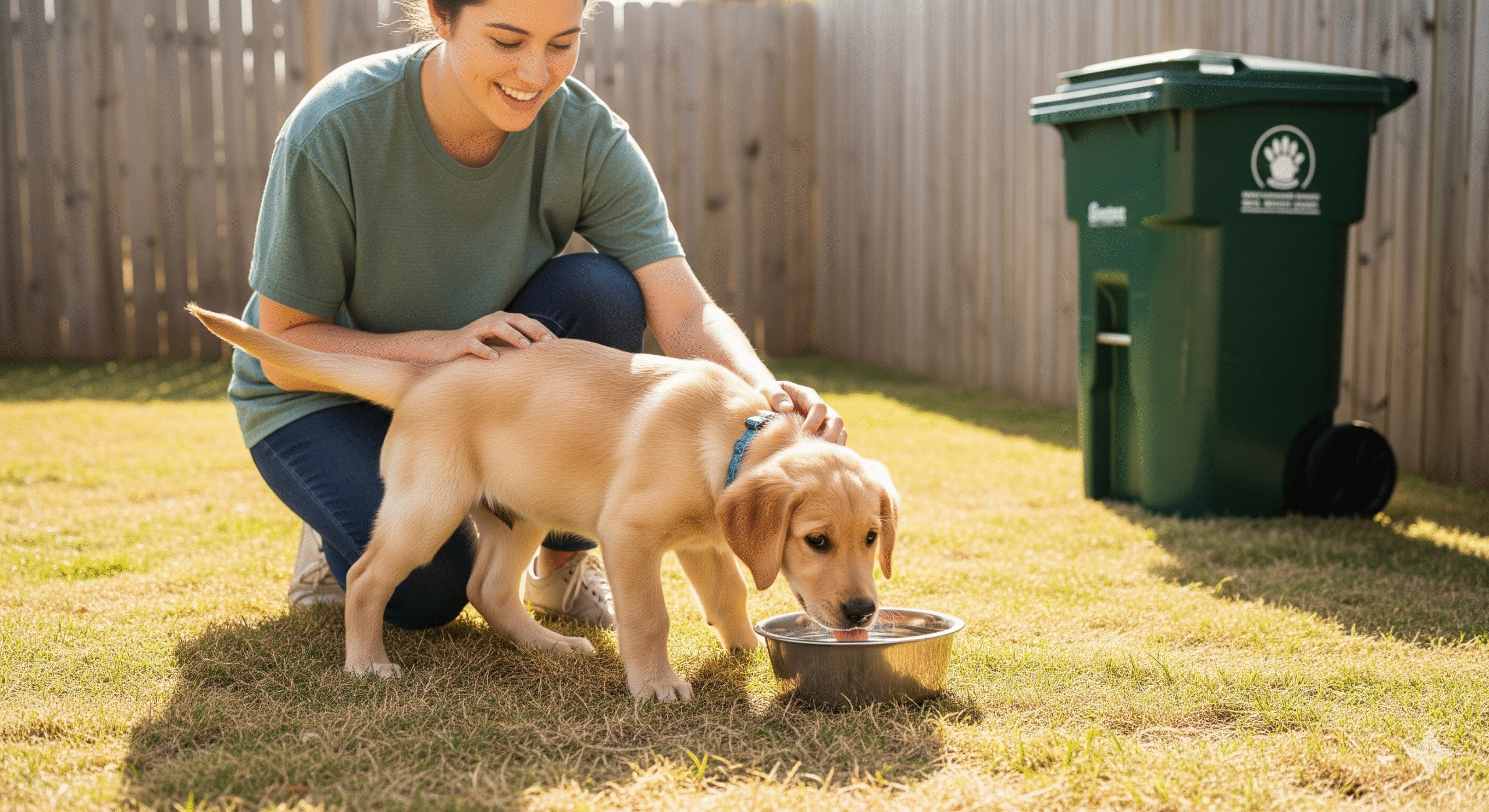Leptospirosis (“Lepto”) is a serious bacterial disease that poses a significant threat to puppies and dogs worldwide. What makes it particularly concerning is its zoonotic nature, meaning it can be transmitted from animals to humans. For puppies with developing immune systems, a Lepto infection can rapidly progress from mild symptoms to life-threatening organ failure. The bacteria are shed in the urine of infected wildlife and can survive for weeks in stagnant water and damp soil, creating an invisible hazard in backyards, parks, and puddles.
This comprehensive guide will demystify this complex disease, providing clear information on how puppies become infected, the devastating symptoms to watch for, and—most importantly—how to protect your furry family member through vaccination and smart management practices.
Here’s what we’ll cover:
✔️ What Leptospirosis is and how the bacteria survive in the environment
✔️ The most common ways puppies get infected (it’s not just from water!)
✔️ Early and severe symptoms of Lepto that demand immediate vet attention
✔️ How veterinarians diagnose and treat this complex disease
✔️ The Lepto vaccine: its importance, schedule, and limitations
✔️ Practical prevention strategies to reduce your puppy’s risk
✔️ The human health risk and how to protect your family
Let’s equip you with the knowledge to keep your puppy safe from this dangerous disease.
What is Leptospirosis? The Science of the Spirochete 🔬
Leptospirosis is caused by spiral-shaped bacteria called Leptospira interrogans. There are over 250 serovars (strains) of this bacteria, but a handful are most common in dogs.
- How it Survives: The bacteria thrive in warm, moist environments and can survive for months in stagnant water, mud, and soil, especially in mild climates.
- The Transmission Cycle: The bacteria are maintained in nature in the renal tubules of carrier hosts, primarily wildlife like raccoons, skunks, opossums, rats, and deer. These animals shed the bacteria in their urine, contaminating the environment without getting sick themselves.
- Incidental Hosts: Dogs (and humans) are “incidental hosts,” meaning they can become infected and get very sick when they come into contact with the contaminated environment or urine from a carrier host.
How Do Puppies Get Leptospirosis? The Routes of Exposure 🐀
Puppies are curious and explore the world with their mouths, putting them at high risk. Infection occurs through mucous membranes or broken skin.
- Stagnant or Slow-Moving Water: This is the classic source. Puddles, ponds, lakes, and even muddy ditches can be contaminated with urine from infected wildlife.
- Contaminated Soil: Simply sniffing or walking on contaminated soil and then licking their paws can be enough.
- Direct Contact with Urine: Sniffing the urine of an infected animal or coming into contact with urine at a dog park.
- Bites from Infected Animals or eating infected tissue (carcasses).
- Even in Urban Areas: Rats are a major carrier. A puddle in a city alley can be just as dangerous as a country pond.
Symptoms of Leptospirosis: From Mild to Severe 🚨
The signs can be vague at first and are often mistaken for other illnesses. The incubation period is usually 5-14 days after exposure.
Early Signs (Often Missed):
- Fever
- Shivering
- Muscle tenderness
- Lethargy
- Loss of appetite
- Vomiting and diarrhea
Severe Signs (Organ Failure):
As the bacteria attack the organs, the disease becomes critical:
- Jaundice: Yellowing of the gums, skin, and whites of the eyes (sign of liver failure).
- Increased thirst and urination (sign of kidney failure).
- Dark orange urine (from bilirubin).
- Severe vomiting and diarrhea, possibly with blood.
- Difficulty breathing (from lung hemorrhage).
- Weeping eyes (uveitis).
Leptospirosis can be fatal if not treated aggressively and promptly.
Diagnosis and Treatment: A Race Against Time 🏥
- Diagnosis: Can be challenging. Vets use a combination of blood tests (looking for antibodies or PCR testing), urine tests, and clinical signs.
- Treatment: Requires immediate and aggressive veterinary care.
- Hospitalization: Often necessary for IV fluids and supportive care.
- Antibiotics: Specific antibiotics (like doxycycline) are required to clear the bacteria from the system and stop the shedding.
- Supportive Care: This includes IV fluids to support kidney function, medications to control vomiting, and liver protectants.
Prognosis: With early, aggressive treatment, survival rates are good. However, some dogs may sustain permanent kidney or liver damage.
The Lepto Vaccine: Your Puppy’s Best Defense 💉
Vaccination is the cornerstone of prevention.
- What it covers: The vaccine typically protects against the 4 most common serovars (Grippotyphosa, Pomona, Canicola, Icterohaemorrhagiae).
- Schedule: It is a two-shot series for puppies, given 2-4 weeks apart. The first dose can be given as early as 12 weeks. An annual booster is required to maintain immunity.
- Is it a “core” vaccine? It is considered a “lifestyle vaccine,” but many vets now recommend it for most dogs due to the disease’s prevalence and severity.
- Reaction Risk: The Lepto vaccine has a slightly higher rate of adverse reactions (like lethargy or soreness) than core vaccines, but the risk of the disease far outweighs the risk of the vaccine. Your vet may recommend a pre-vaccine antihistamine for sensitive dogs.
Prevention: Beyond the Vaccine 🛡️
- Vaccinate! This is the single most effective step.
- Avoid Stagnant Water: Don’t let your puppy drink from or play in puddles, ponds, or standing water.
- Control Rodents: Secure trash cans and eliminate food sources that attract rats and other wildlife.
- Practice Good Hygiene: Wear gloves if cleaning up urine from a sick dog. Wash your hands thoroughly after handling your puppy, especially if they’ve been outside.
The Zoonotic Risk: Protecting Your Family 👨👩👧
This is a critical component. Humans can get leptospirosis from contact with the urine of an infected dog.
- Wear gloves when cleaning up urine or caring for a sick dog.
- Disinfect areas soiled with dog urine with a diluted bleach solution.
- Wash hands thoroughly with soap and water after any contact.
- Seek medical attention if you develop flu-like symptoms after your dog has been diagnosed.
Final Checklist for Lepto Prevention ✅
☑️ I have discussed the Lepto vaccine with my veterinarian.
☑️ I prevent my puppy from drinking from puddles, ponds, or stagnant water.
☑️ I am aware of the symptoms of Lepto and will call my vet immediately if I see them.
☑️ I practice good hygiene, especially when cleaning up after my puppy.
☑️ I understand this is a disease that can also affect me and my family.

.While socialization is important for all dogs, it is non-negotiable for naturally protective breeds. Early, positive exposure is what creates a stable companion. This is especially true for certain breeds, and our guide to Rottweiler puppy training and socialization covers the specific milestones and techniques required for them.






